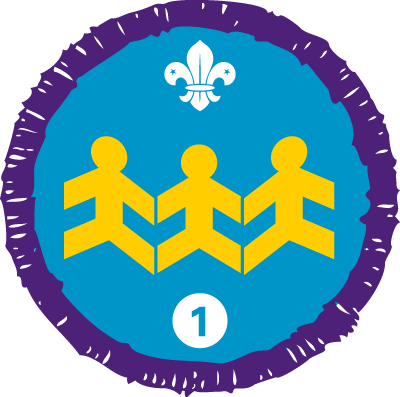Two posts in the same week. What madness is this?
Hello again, Martin returning to the keyboard. This is hopefully not me reinventing the wheel and should be something that the Units have already discussed. It’s standard advice over every Jamboree or Moot or event I’ve been to so I’m going to repeat it with my unique spin.
I am talking about the Buddy System.
If you haven’t realised already, the Jamboree is huge. Bigly Huge. Over 57 square kilometres, roughly the same size as the city of Nottingham. It is going to be ridiculously easy to forget to eat or drink or even sleep because there is so much going on. Trust me. I’ve been there. This is again a post in two parts, Young People/Participants and IST/Adults because the nature of our Jamborees are somewhat different. I’ll do a introductory paragraph then split off to our respective sections before bringing us all back together.
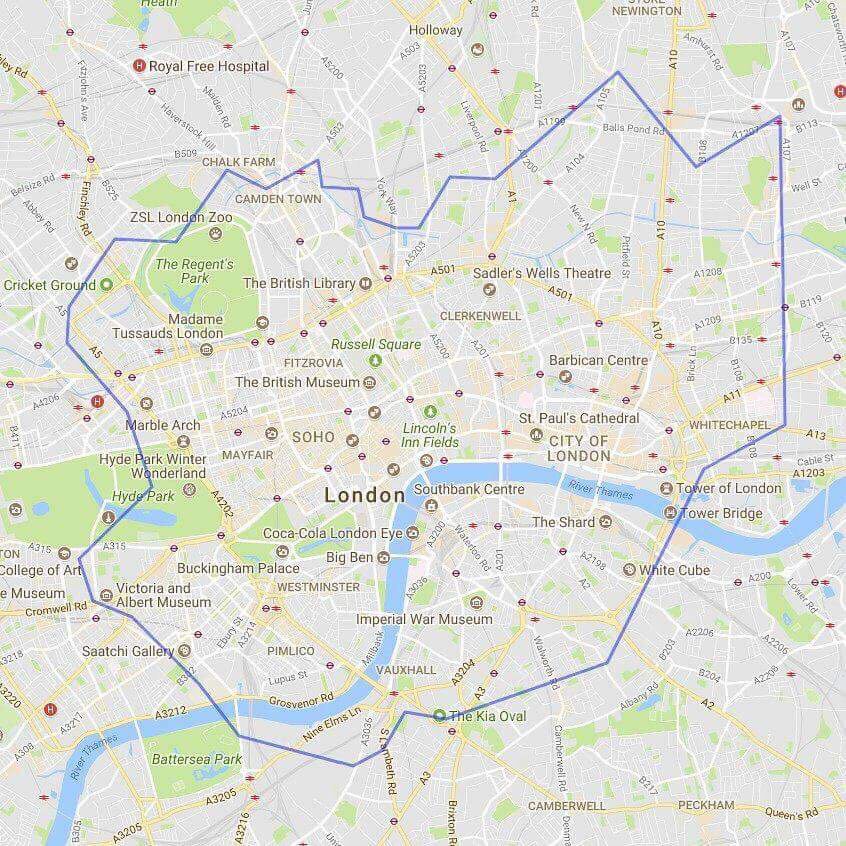
The Buddy System is exactly what it sounds like. You ‘buddy’ up with someone or within a group to keep an eye on each other. Everything from hydration and sleep management through to prospective homesickness. It’s incredibly difficult to look after yourself, but having a bit of responsibility for someone else helps them, and helps you when they start nagging back! This can be anyone going, a member of your unit or a fellow IST or CMST or Unit Leader. Just y’know, Yellow Card. I still don’t know how tents will be working once we’re out there, but the ‘usual’ (if there is such a thing) arrangement is for tent mates to Buddy up when possible.
Participants
As participants, you have Adults there who are responsible for you, but there are 9 participants to each unit leader, and they won’t always be with you. It would be damn near impossible to have them follow you round everywhere and even then, you probably wouldn’t want them to. Part of the Jamboree should be you getting to go on your own adventures, unsupervised. But, with a ratio of 1 adult to 9 Participants it will be difficult for them to keep up with everything that’s going on. That ratio is a best-case-scenario and doesn’t account for any of the eventualities where a Leader has to step away for a while.
I hope your Unit Leaders or some visiting member of the IST has mentioned the buddy system and you have started thinking about who your buddy might be. As I’ve said somewhere up above there, the usual custom is that you buddy up with whoever you’re sharing a tent with.
I suppose, you may be wondering why bother?
When I went to the 2007 Jamboree as a participant we had a rule that you had to go everywhere in at least a pair. This meant that someone knew where you were and if there was any trouble, someone was with you to raise the alarm etc. Except, once you’re away from the camp, the chances that your Unit Leader will bump into you amongst the 45,000 people there is slim. I will hold my hand up and admit that I wandered off by myself to go badge-swapping on a couple of occasions, I’d slip out with a crowd when they left the site and then disappear off into the crowd to set myself up to swap. Looking back now, it was a bit stupid, especially given I’m diabetic, but at the time, I needed a little bit of time to sit by myself and take in the experience. For me it was as simple as that, and I was never caught (to my knowledge) and told off for wandering off by myself.
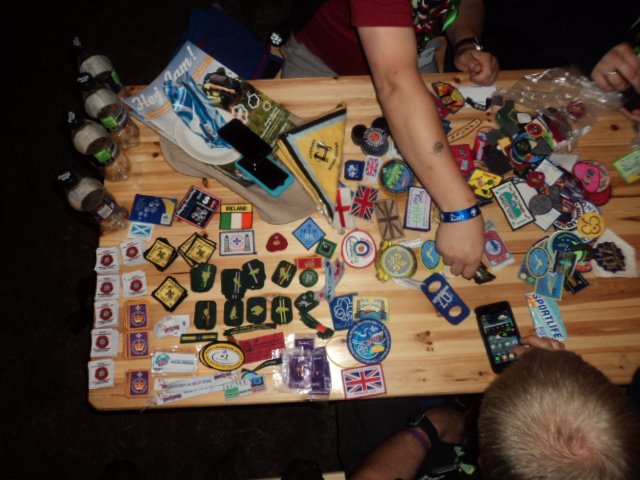
You see, the reality is that you probably know your other unit members far better than the Unit Leaders do. You’ll have stayed up through the night at your training weekends and learnt all about your new friends. In this modern age of joined up social media etc. you’re likely in Group chats and follow each other religiously. it means that you might recognise patterns of behaviour before the Unit Leaders do. You might notice someone’s not acting themselves or that they’ve become withdrawn or even that they’re disappearing off at night.
If any of my unit noticed, they were either glad or it didn’t overly concern them, or if they flagged it up to the Leaders, none of them were overly concerned about it. But there is a chance that this pattern of behaviour could mean more than ‘I need a little bit of time to myself’. If you’re concerned about your buddy, speak to them, they may feel far more comfortable speaking to you as a participant and a friend rather than a unit leader. If they won’t talk to you and you’re still concerned, speak to your unit leader, or the Listening Ear team. They’ll be able to help.
IST
Attending the Jamboree as IST is a very different event to the participants and unit leaders. For a start, we don’t have anyone looking after us. There are Contingent Support and Management Team members who are responsible for the IST, but they’re not going to come round and check on us all individually. I don’t know the exact numbers, but the ratio of them to us is far more than 1:9!
On a daily basis we are responsible for ourselves. There is no-one noticing we’re skipping meals. There’s no-one noticing that we’ve not been back to the tent for two or three nights. There’s no-one there to notice we’re skipping showering or brushing our teeth.
This is where your buddy will come in.
Whether it be someone you’re sharing a tent with or a friend you’re going to the Jamboree with, stay in touch, agree a check in method – whether it be talking daily or sending a #safeselfie.
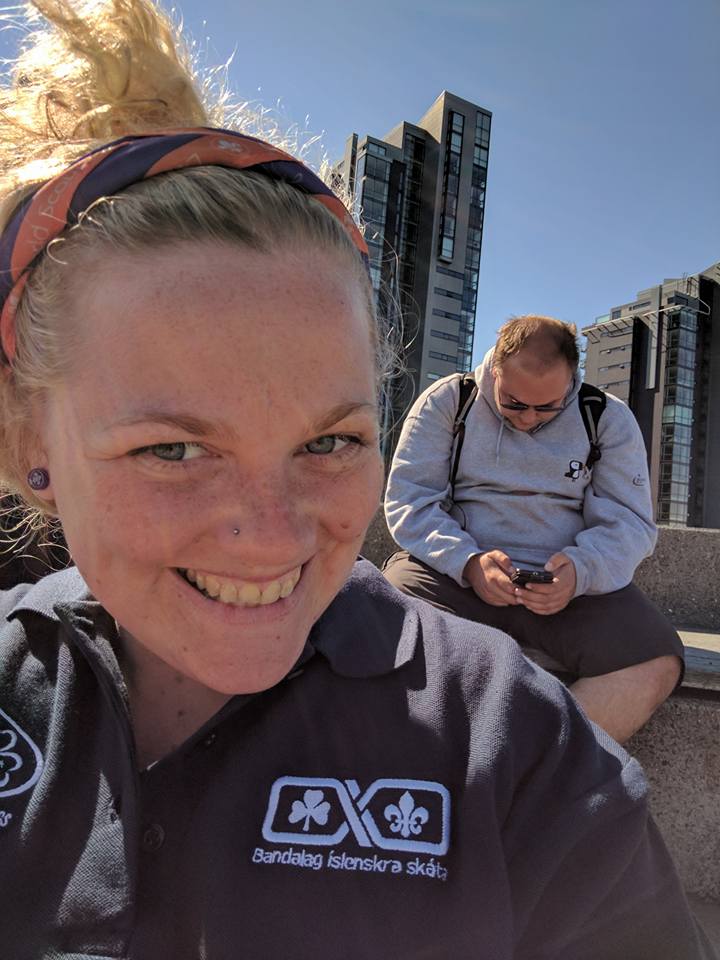
Back in 2011, my first event as IST, I buddied up with a friend of mine. We were from the same Scout District and knew each other reasonably well. Except when we got to site we were given completely different jobs. I was in Participant food on shifts and he was working in the VIP area. We didn’t see each other for the whole Jamboree. Fortunately, independently, we made very good friends with the teams we were working with and sort of buddied up with them for the duration of the event (and in his case, the King of Sweden…). We did exchange a text every day that went along the lines of ‘Not dead, must try harder’ and caught up at Copenhagen Airport on the way home.
In both Japan and Iceland, I was in a very fortunate position of knowing a lot of folk. The advantage (as an adult) of doing these events is you keep seeing the same faces at these events. In both Japan and Iceland a large portion of my friendship groups were there and we made sure to check on each other. It wasn’t quite formal, but when we bumped into each other we’d stop, have a chat and make sure everyone was okay. This worked really well, and it meant we could moan about each other without the others finding out 😉
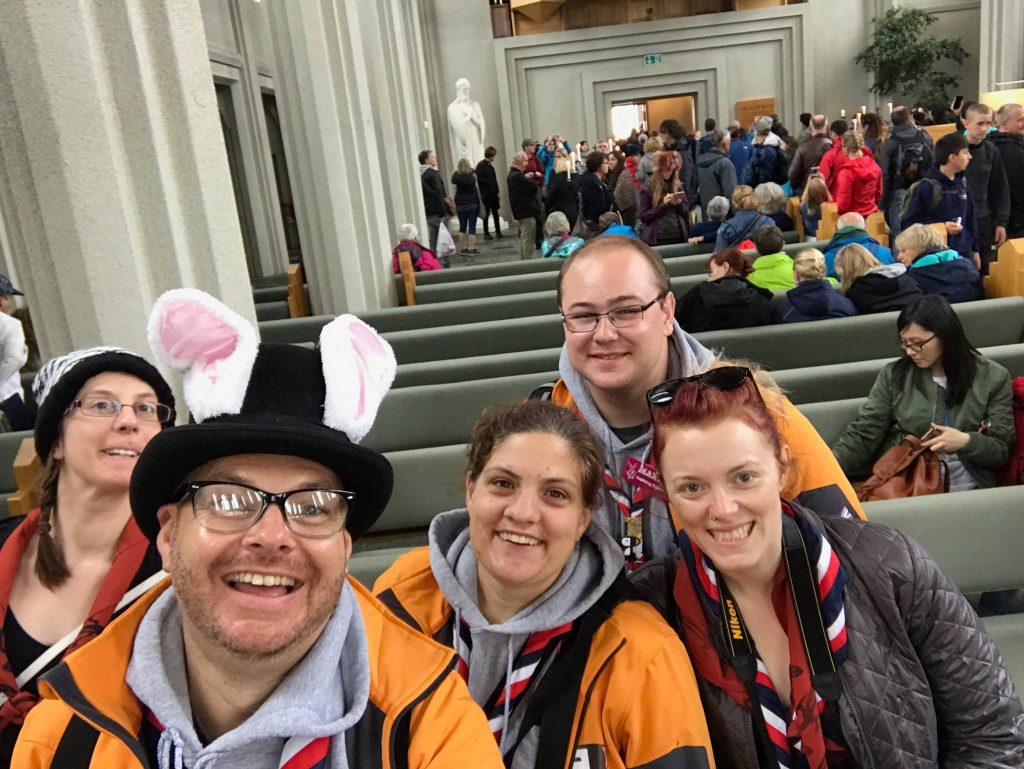
Hallgrimskirkja in Reykjavik before the event kicked off
Which is all well and good if you know lots of folk going.
But what if this is your first Jamboree? What if you don’t know many people going?
I was kinda in this position back in 2013 when I went to Canada. I’d signed up to the Moot, basically to keep me in Scouting. I’d had a bad experience and was on the verge of quitting and my very good friend Cat signed up to go then persuaded me to do the same. I joined the Facebook group for the contingent and didn’t recognise any of the names. I was going half way round the world and I knew exactly one person going.
It’s the reason I can’t recommend attending the local meet ups and the official training/briefing weekends enough. There were 11 of us from Scotland going and through being added to that Facebook Group I discovered my Tent buddy from Sweden was also going. Excellent, up to two people!
Through Uni and work I missed the first training weekend for Canada, but had managed to get signed up to the second. I got the train down to Newcastle and Cat gave me a lift down to the weekend.
Nowadays, I can tell exactly when that weekend was from the number of friendversaries I get on Facebook. I made some amazing friends that weekend. It’s the weekend I first met Lyndsey (we think) and look how that’s turned out. It’s the weekend I met one of my now best friends, Kirsty, who had come down from Edinburgh (I know, I feel dirty), not knowing anyone at all and left with a friendship group she’s still in touch with, and in my case, Scouts with almost every week.
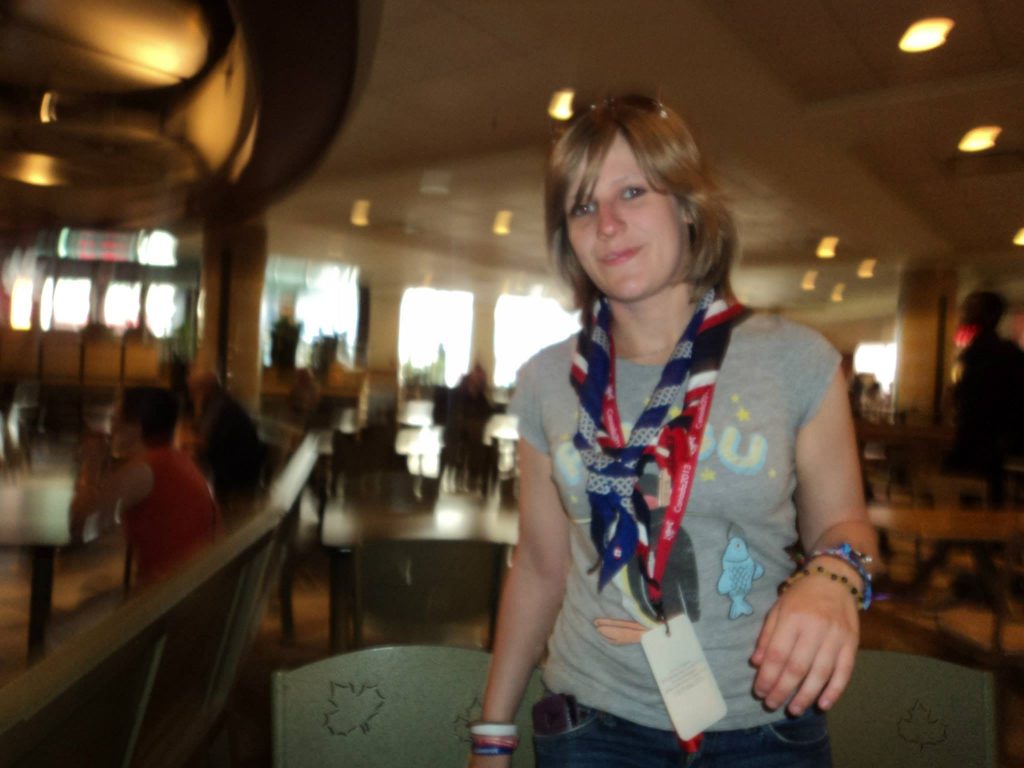
Cat, however, was still my Buddy for that event. And given our tents used each others pegs in Japan, we kept an eye on each other then too!


Now, I know that there’s a plethora of reasons you might not be able to make the All Adults Weekend in 15 days. I missed the one for Japan because I was studying for my finals. Not that it did me much good, I still ended up with a Third. These things have to come first.
I would suggest making every effort to go to any of the regional events that are on – or organising one yourself. The massive advantage of Jamborees over Moots is the size of the contingent. There are more IST attending this Jamboree than the whole contingent for Iceland. It means that you’re probably not the only IST in your District, and absolutely not within your County. I’d recommend making contact with anyone else going from your area of the UK (or whatever part of BSO you may be from).
The Scottish Units/IST are having a big weekend up at Meggernie Activity Centre at the end of June which will be an opportunity to gather everyone in Scotland together for this purpose. Similarly, I know a few places down South are doing similar events. But it’s not too late to make contact with your local Unit and offer assistance – you might find there are other IST doing the same.
If you’re not sure who to speak to, drop your District/Area/Region/County Commissioner an email and explain who you are and that you want to make contact with others going to the Jamboree. With the whole GDPR thing you’ll probably have to ask that your contact details be passed on rather than asking for other peoples, but it’s a means to an end.
If you’re still struggling, or you’re from Shetland or somewhere were it’s not that easy to travel to meet up with folk or there’s no-one else going from your District/Area/Region/County, Matty set up the UK Contingent (Unofficial) Self Help Group last year. He set up a similar group a few weeks before we went to Iceland in 2017 for various reasons, and it was a fantastic way of talking with new people and members of the contingent all over the UK. Stick up a post in there and see what happens.
At the very least, if you’re travelling with the Contingent, you’ll meet everyone on your flight in the airport. They’ll be the ones in the cream shirts with the brown hats and blue and red bags buzzing with excitement. Probably in the ubiquitous Weatherspoons just inside security. Chat with them, get to know them. They might become your best friends for the time you’re away.
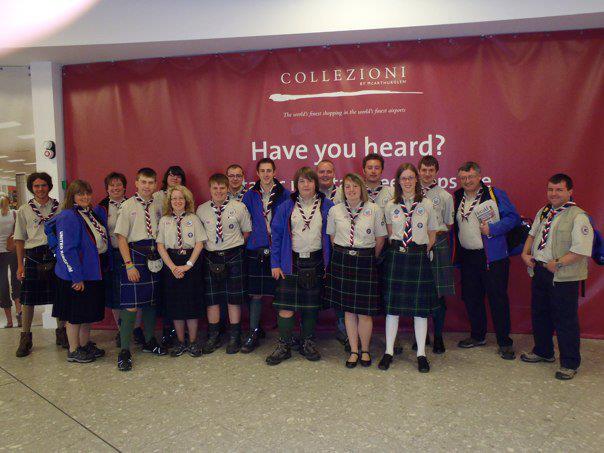
It seems an odd sentiment on a site with somewhere between 40,000 and 50,000 people on it, but a Jamboree can be the loneliest place in the world. The more familiar faces there are the less so it becomes.
Just as a final, precautionary note, because I’m aware this has been a long one. I, like many of you out there, know Young People attending as a participant. I have two of my former Scouts from the time I was an SL, both of whom are now Young Leaders in the Group where I am GSL going. Some of you will be parents or aunties/uncles or even siblings to Participants.
Whilst we’re out there, we are not their Leaders or their family. It’s a really difficult thing to comprehend, because we’ll be curious how they’re getting on and possibly concerned about how they’re coping with things, but, we aren’t there for them. That’s what the Unit Leaders are for. They’ve built a rapport with the Young People and are the first port of call. Especially for family, if the situation escalates, you will be called in, but the best thing you can do is to give the Young People space to have their adventures.
That being said, I plan on dropping in on the Unit my former Scouts are a part of once or twice if my shifts allow. Being a friendly face that isn’t a Unit Leader or other Unit member is sometimes useful, but they have their Jamborees and I have mine. The last thing I want to do is spoil their Jamboree because I’m constantly checking up on them.
Lastly, very, very lastly – because Lyndsey has only just told me about it – the Jamboree Organisers are looking to enforce a buddy system where you go nowhere alone for safety and security purposes – as per the BSA Rules. I’m not sure how it’ll work in practice, but them’s the rules!
So hopefully this hasn’t been completely new, rather a reinforcement of an existing concept. Start thinking about who you would ask to be your Buddy, whether its someone in your unit a fellow Unit Leader/IST/CMST/JPT or any other TLA.
So, till next time,
Martin

